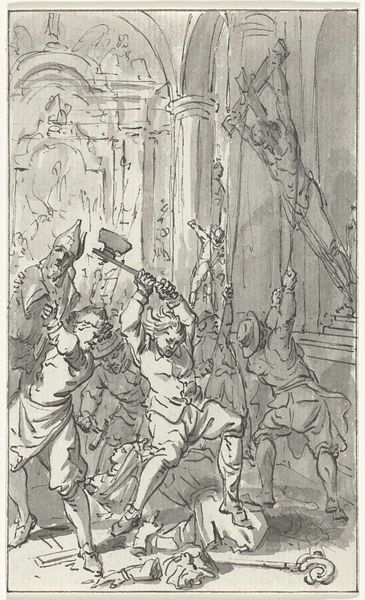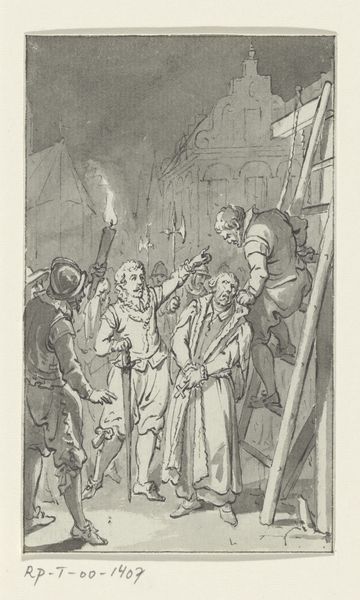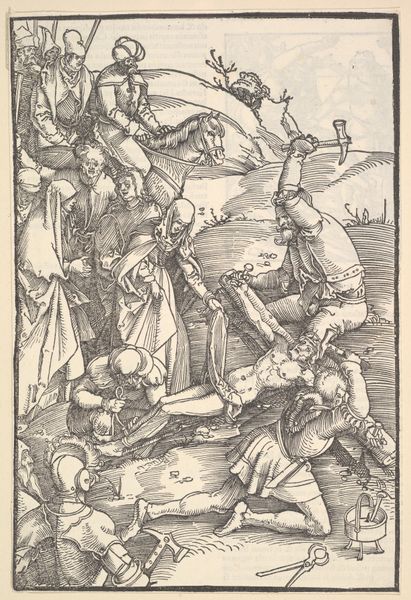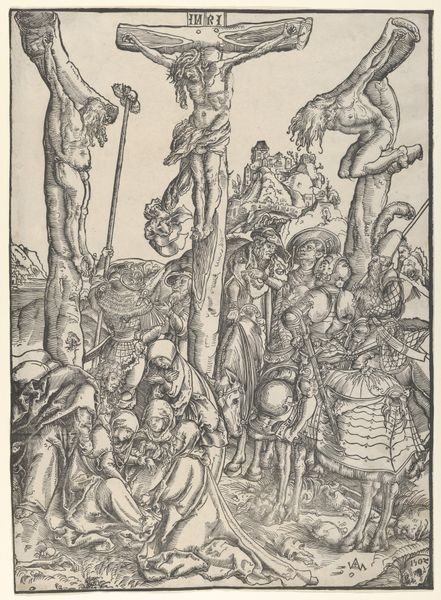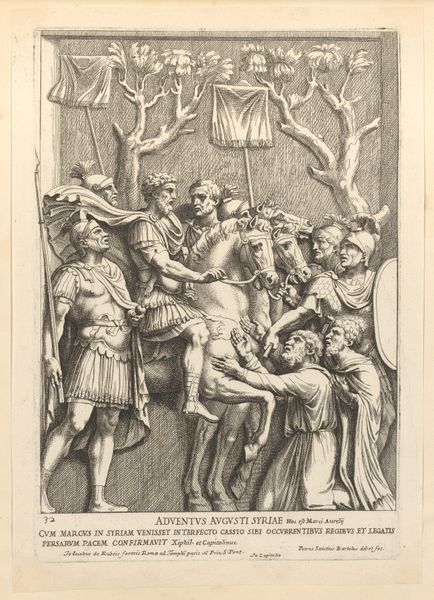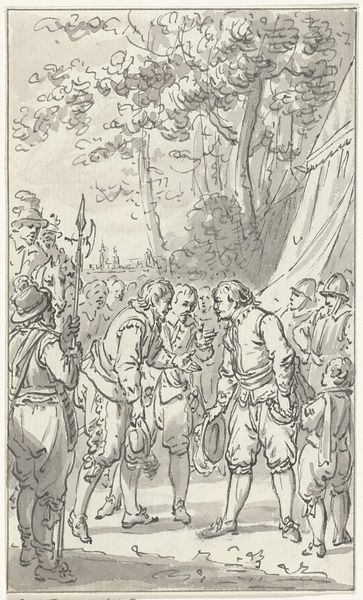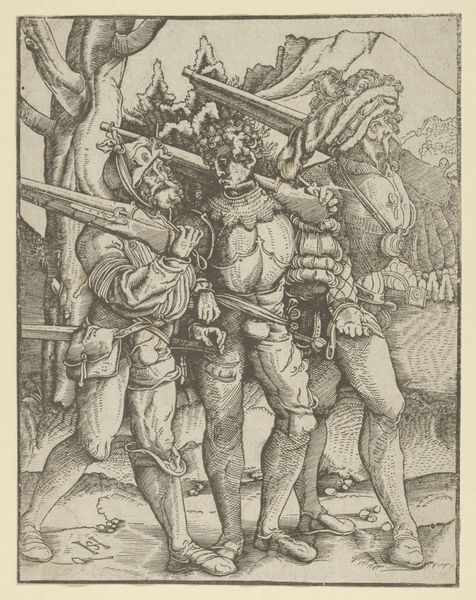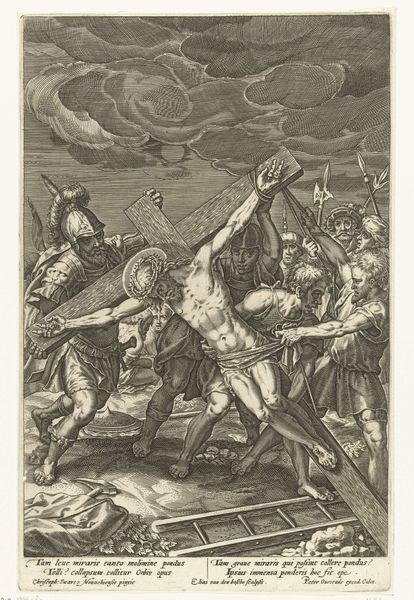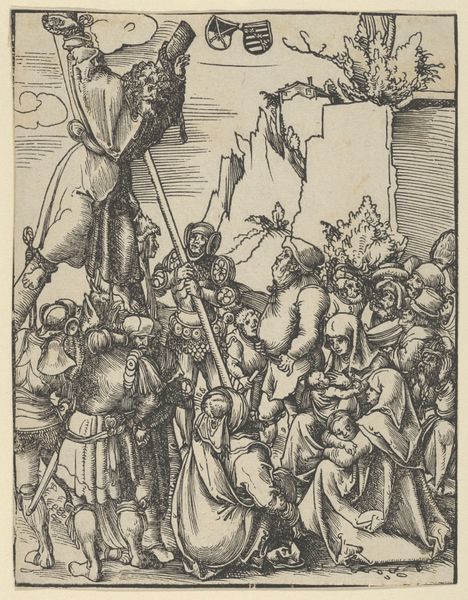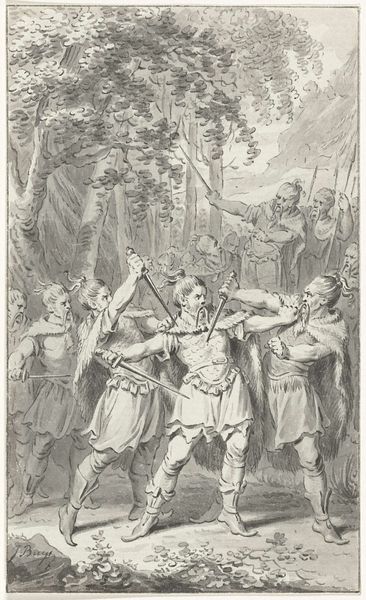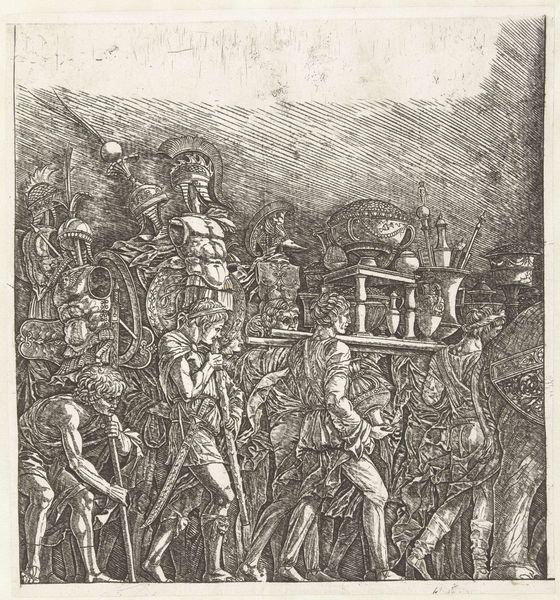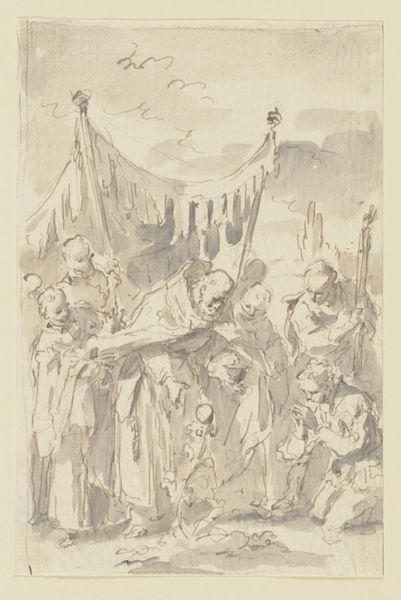
Dimensions: height 148 mm, width 90 mm
Copyright: Rijks Museum: Open Domain
Editor: This is "Moord op de Germaanse veldheer Arminius, 19" or "Murder of the Germanic Commander Arminius, 19" by Jacobus Buys, created between 1779 and 1784. It's a pen and ink drawing currently held at the Rijksmuseum. There's such dynamism and violence depicted with fairly simple means. What stands out to you in this piece? Curator: I am immediately drawn to the materiality of this work. Buys uses readily available and relatively inexpensive materials: pen, ink, and paper. What social context allows for the production and, crucially, the consumption of a work depicting the assassination of a Germanic commander? Editor: That's an interesting point. The story it tells, combined with the starkness of the pen and ink medium, gives it a sense of immediacy. Is he challenging high art conventions by not choosing oils? Curator: Precisely. This isn’t some grand history painting in oils meant for a palace. This is a drawing, a reproductive print perhaps, meant for a broader audience, using materials available to a burgeoning middle class. Consider the labour involved - Buys or his workshop, replicating these for distribution. It democratizes access to historical narratives. Does the use of ink alter our understanding of 'value' within the artistic market of the time? Editor: It seems like it challenges the notion of art as purely a luxury item. It suggests a purpose beyond just aesthetic appreciation. What do you think Buys was trying to achieve through the mass distribution of this image and the use of inexpensive material? Curator: Perhaps a dissemination of Enlightenment ideals or the popularization of historical narratives for national identity formation. It underscores the socio-political agency an artwork can have. It’s about access and the message, conveyed efficiently via these humble materials. Editor: It’s amazing how a simple pen and ink drawing can unpack so much about social context and accessibility of art in the late 18th century. I didn't expect to view this artwork through this perspective. Curator: Indeed, the materiality of art holds immense potential to enhance our knowledge regarding cultural significance, manufacturing and modes of consumption.
Comments
No comments
Be the first to comment and join the conversation on the ultimate creative platform.
